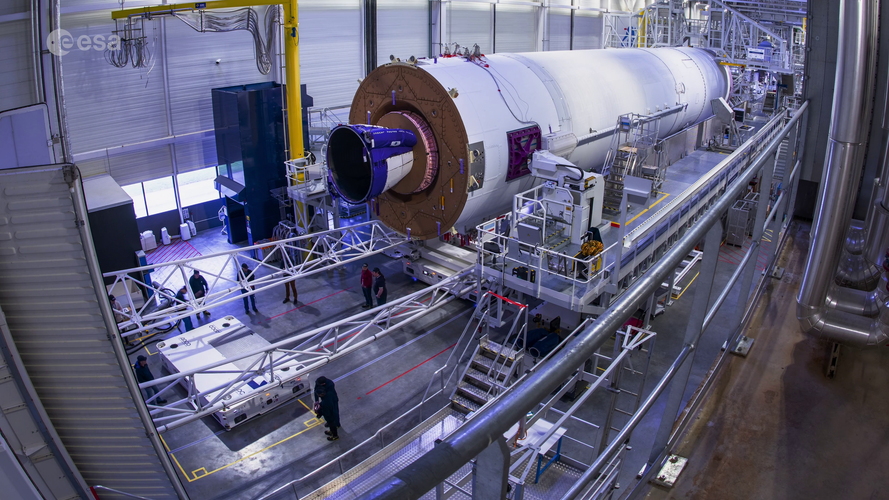A timelapse of the main stage for the first Ariane 6 rocket as it left the ArianeGroup assembly hall in Les Mureaux, France, on 6 February 2024.
The main stage was constructed in Les Mureaux, France, at ArianeGroup’s assembly hall. After liftoff the main stage for Ariane 6 will fire its Vulcain 2.1 engine and provide steering for eight minutes on the rocket’s ascent into space.
The upper and main stage form the central core of Ariane 6 and are transported to Europe’s Spaceport in French Guiana by ship. The two stages are connected horizontally at before being transport the final few kilometres to the launch area and lifted upright.
Once upright, two boosters will be added for Ariane 6’s first flight; they are already in French Guiana. Lastly, the upper composite fairing – a nosecone that splits vertically in two – and the payloads will be attached on the launch pad.
Ariane 6 is an all-new design, created to succeed Ariane 5 as Europe's heavy-lift launch system. With Ariane 6's upper stage restart capability, Europe's launch capability will be tailored to the needs of multiple payload missions, for example to orbit satellite constellations. This autonomous capability to reach Earth orbit and deep space supports Europe's navigation, Earth observation, scientific and security programmes. Ongoing development of Europe's space transportation capabilities is made possible by the sustained dedication of thousands of talented people working in ESA's 22 Member States.



 Video:
00:01:27
Video:
00:01:27